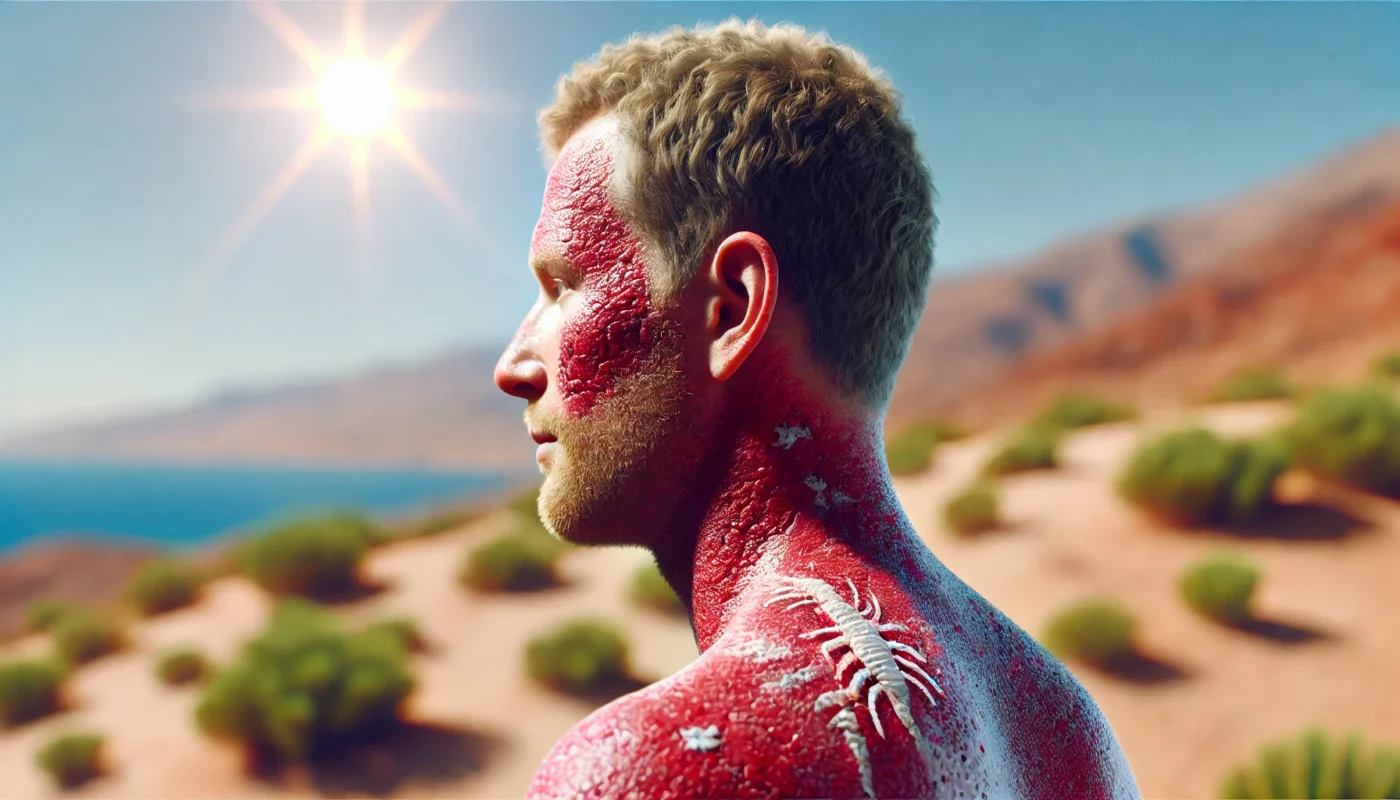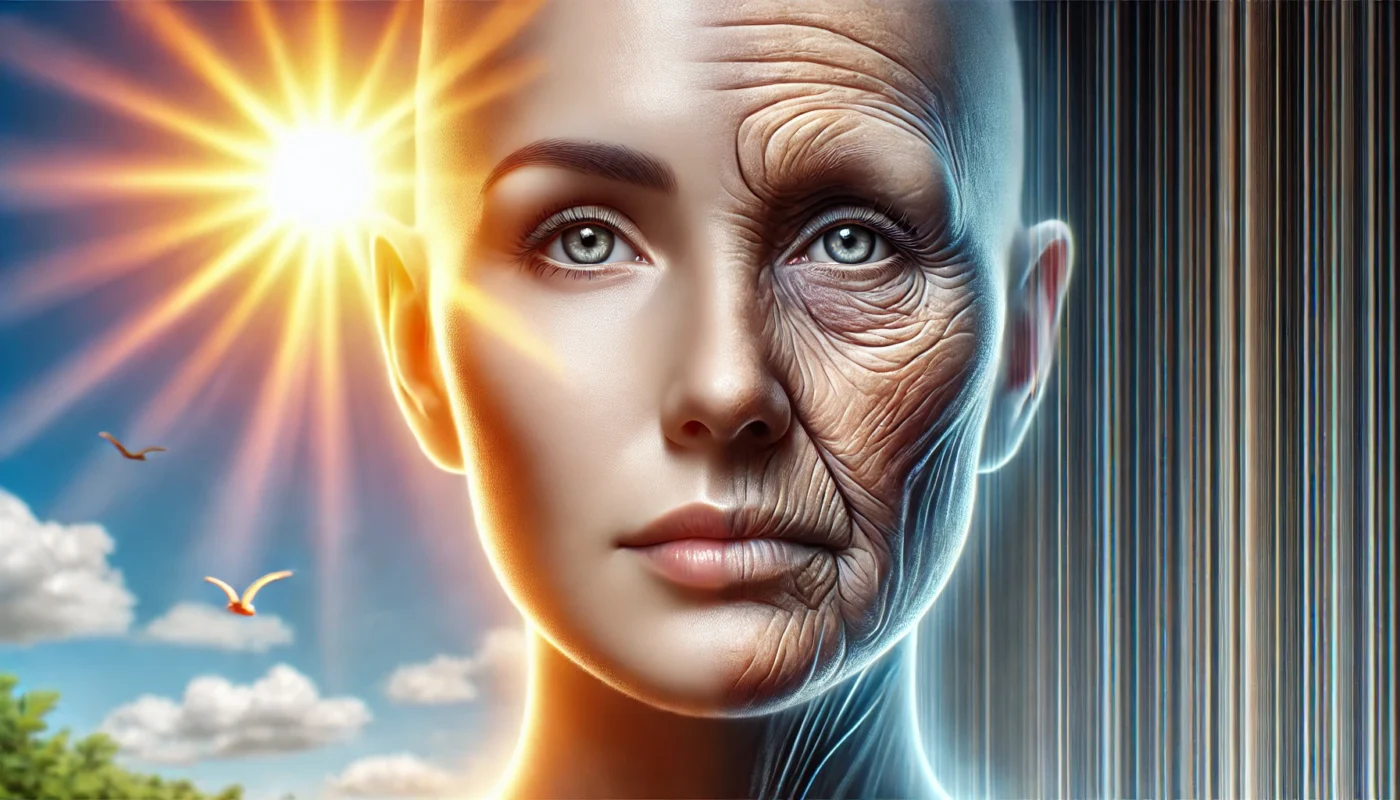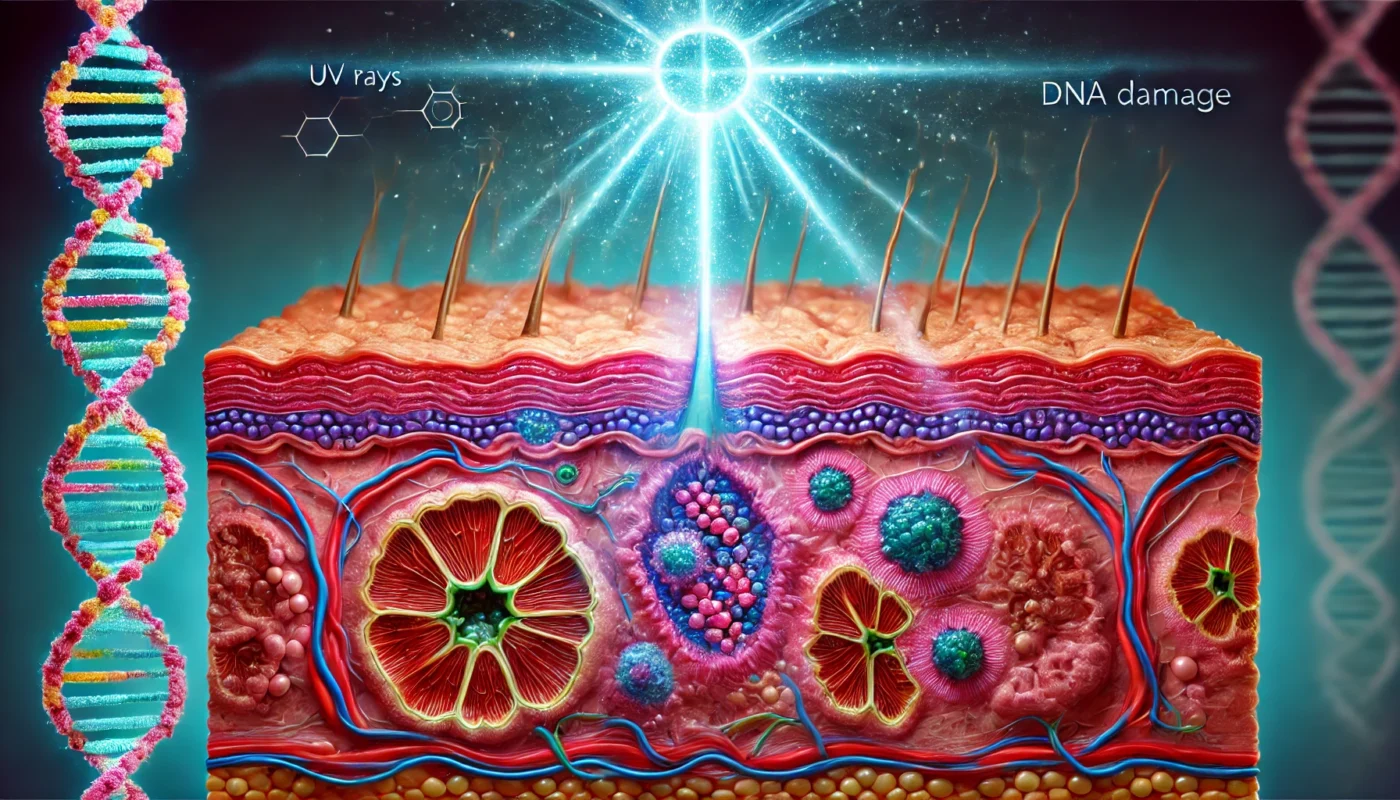Understanding the far-reaching implications of sunburns transcends the immediate redness and discomfort. It involves exploring the potential long-term effects, such as heightened skin cancer risks, accelerated aging, and various skin-related issues. In this detailed guide, we delve into the complex consequences of sunburns, backed by scientific research, and offer practical advice for prevention and treatment.
You may also like: Essential Tips for Sun Protection Daily
The Nature of Sunburns
Are Sunburns Radiation Burns?
To grasp the full impact of sunburns, it’s vital to comprehend their nature. Sunburns are indeed a form of radiation burn, caused by overexposure to ultraviolet (UV) radiation from the sun. This exposure inflicts direct DNA damage on the skin cells, triggering inflammation and the characteristic redness and pain associated with sunburns.
The body’s response to DNA damage involves initiating a repair process. However, when exposure and damage are recurrent, this repair mechanism can become overwhelmed, leading to cumulative harm. Over time, this cumulative damage can manifest in more significant issues such as skin cancer and premature aging.
How Does UV Radiation Affect the Skin?
UV radiation affects the skin at a cellular level, breaking down the DNA structure within skin cells. This disruption can cause mutations, leading to skin cancer if the body’s repair mechanisms fail. UV radiation is divided into UVA, UVB, and UVC rays, with UVA and UVB being the most harmful to the skin.
UVA rays penetrate deeper into the skin, contributing to aging and wrinkles, while UVB rays cause superficial damage, like sunburn. Both types of radiation can lead to skin cancer over time. Understanding this distinction is crucial in selecting appropriate sun protection methods.
The Body’s Defense Mechanisms
The skin has natural defense mechanisms to combat UV damage, including the production of melanin, the pigment responsible for tanning. Melanin absorbs and dissipates UV radiation, reducing its penetration into deeper skin layers. However, this natural protection is limited and can be overwhelmed by excessive sun exposure.
When the skin’s defenses are overrun, sunburn occurs, leading to inflammation and the characteristic redness and pain. The body works to repair the damage, but repeated exposure can lead to permanent DNA alterations, increasing the risk of skin cancer.
Potential Long-Term Effects of Sunburns
Does One Sunburn Cause Cancer?
A prevalent concern is whether a single sunburn can result in skin cancer. While one sunburn is unlikely to directly cause cancer, it does significantly increase the risk. Each sunburn contributes to cumulative skin damage, and with every instance, the risk of developing skin cancer—such as melanoma, basal cell carcinoma, and squamous cell carcinoma—rises.
The Skin Cancer Foundation notes that a history of five or more sunburns can double the risk of melanoma. This statistic underscores the critical importance of consistent sun protection and awareness of the risks associated with repeated sun exposure.
Understanding Cumulative Skin Damage
Cumulative skin damage refers to the gradual accumulation of harm caused by repeated sun exposure over time. Each sunburn adds to this cumulative damage, increasing the risk of long-term skin issues. Even if a single sunburn seems harmless, the damage accumulates with repeated exposure, leading to more significant problems like skin cancer and premature aging.
Understanding the concept of cumulative damage emphasizes the importance of daily sun protection. By minimizing exposure and implementing protective measures, you can reduce the risk of long-term damage and maintain healthier skin.

Symptoms of Sun Damage
Sun damage can manifest in various forms, from immediate symptoms like redness and blistering to long-term effects such as:
- Wrinkles and Fine Lines: UV radiation breaks down collagen, the protein responsible for maintaining skin elasticity, leading to premature aging. This breakdown results in the formation of wrinkles and fine lines.
- Hyperpigmentation: Sunburns can cause uneven skin tone and dark spots due to melanin overproduction during the healing process. These spots, often referred to as sunspots, can become more pronounced with repeated sun exposure.
- Leather-like Skin Texture: Prolonged exposure can lead to a tough, leathery texture, a condition known as solar elastosis. This change in texture is often irreversible and can affect the skin’s appearance and health.
Is Sunburn Damage Permanent?
The permanency of sun damage largely depends on the extent and frequency of exposure. While some effects, like mild discoloration, may fade over time, other forms of damage, such as deep wrinkles and skin cancer, can be permanent. The key lies in prevention and early intervention to minimize the risk of long-term damage.
Early detection and treatment of skin damage are crucial in preventing permanent harm. Regular skin checks and prompt medical attention for suspicious changes can help mitigate the risk of severe consequences.
Preventing Sunburns and Minimizing Damage
How to Prevent Sunburns
Preventing sunburns is essential in reducing long-term damage. Here are some effective strategies:
- Use Broad-Spectrum Sunscreen: Apply a broad-spectrum sunscreen with an SPF of at least 30. Reapply every two hours, and more frequently if swimming or sweating. Look for sunscreens with added ingredients like zinc oxide or titanium dioxide for better protection.
- Seek Shade: Avoid direct sun exposure during peak hours, typically between 10 a.m. and 4 p.m. Seeking shade during these times can significantly reduce your risk of sunburn and long-term skin damage.
- Wear Protective Clothing: Long-sleeved shirts, wide-brimmed hats, and UV-blocking sunglasses can provide physical barriers against UV rays. Consider clothing with built-in UPF (ultraviolet protection factor) for added protection.
The Role of Dietary Protection
In addition to topical measures, certain foods can enhance your skin’s natural defenses against UV damage. Antioxidant-rich foods, such as berries, nuts, and green leafy vegetables, can help neutralize free radicals generated by UV exposure. Incorporating these foods into your diet can support skin health and reduce the risk of sun damage.
Hydration is also crucial in maintaining healthy skin. Drinking plenty of water helps keep the skin hydrated, improving its resilience against sun damage and promoting faster recovery after sun exposure.

Sunburn Damage Treatment
If you do get sunburned, taking immediate steps can help mitigate damage:
- Hydration: Drink plenty of water to help your skin recover from dehydration caused by sun exposure. Staying hydrated can also promote faster healing and reduce peeling.
- Aloe Vera and Moisturizers: Apply soothing creams like aloe vera to reduce inflammation and prevent peeling. Moisturizers with antioxidants can also aid in repairing sun-damaged skin.
- Avoid Further Sun Exposure: Allow your skin to heal by staying out of the sun until the burn subsides. Protecting the affected area with clothing or sunscreen can prevent further damage.
Improving Skin After Sun Damage
How to Fix Discolored Skin from Sunburn
Addressing discoloration and other sun damage involves a combination of topical treatments and lifestyle adjustments:
- Topical Treatments: Products containing vitamin C, retinoids, and niacinamide can help even out skin tone and promote cell turnover. These ingredients can also improve skin texture and reduce the appearance of dark spots.
- Professional Treatments: Dermatological procedures like chemical peels, laser therapy, and microdermabrasion can effectively treat deeper discoloration and texture changes. Consulting a dermatologist can help determine the most appropriate treatment for your skin.
- Diet and Hydration: Maintaining a diet rich in antioxidants, such as vitamins C and E, can support skin health and repair. Adequate hydration also aids in maintaining skin elasticity and reducing the appearance of sun damage.
Do Sunburn Wrinkles Go Away?
While some improvement in sun-induced wrinkles is possible with topical treatments and dermatological procedures, prevention remains the best strategy. Once collagen is significantly damaged, complete reversal is challenging. However, consistent use of anti-aging products and sun protection can improve the appearance of sun-induced wrinkles over time.
Adopting a comprehensive skincare routine that includes sunscreen, moisturizers, and anti-aging products can help maintain skin health and reduce the appearance of sun damage. Regular consultation with a dermatologist can also provide personalized recommendations for your skin type.
The Importance of Regular Skin Checks
Regular skin checks are crucial in detecting early signs of skin cancer and other sun-related damage. Self-examinations and annual dermatologist visits can help identify suspicious changes and allow for early intervention. Early detection is key in preventing the progression of skin cancer and minimizing long-term damage.
Educating yourself about the signs of skin cancer, such as new or changing moles, can also empower you to take proactive steps in safeguarding your skin health.

Conclusion
Sunburns are more than just a temporary inconvenience. They are a visible sign of underlying skin damage that can have lasting consequences, including an increased risk of skin cancer and premature aging. By understanding the risks and implementing effective prevention and treatment strategies, we can protect our skin and maintain its health and vitality.
Remember, the best approach to sunburns is prevention. Regular use of sunscreen, seeking shade, and wearing protective clothing are simple yet powerful steps in minimizing sun exposure and safeguarding your skin’s future.
By taking these precautions, you not only reduce the immediate discomfort of sunburns but also invest in your long-term skin health. Stay informed, stay protected, and enjoy the sun responsibly.
Further Reading:
How dermatologists treat sun-damaged skin
sunburn, skin damage, skin cancer, UV radiation, sun protection, sunburn treatment, sunburn symptoms, skin health, premature aging, skin care, cumulative damage, sunscreen, tanning, skincare routine, antioxidants.
Important Note: The information contained in this article is for general informational purposes only, and should not be construed as health or medical advice, nor is it intended to diagnose, prevent, treat, or cure any disease or health condition. Before embarking on any diet, fitness regimen, or program of nutritional supplementation, it is advisable to consult your healthcare professional in order to determine its safety and probable efficacy in terms of your individual state of health.
Regarding Nutritional Supplements Or Other Non-Prescription Health Products: If any nutritional supplements or other non-prescription health products are mentioned in the foregoing article, any claims or statements made about them have not been evaluated by the U.S. Food and Drug Administration, and such nutritional supplements or other health products are not intended to diagnose, treat, cure, or prevent any disease.

